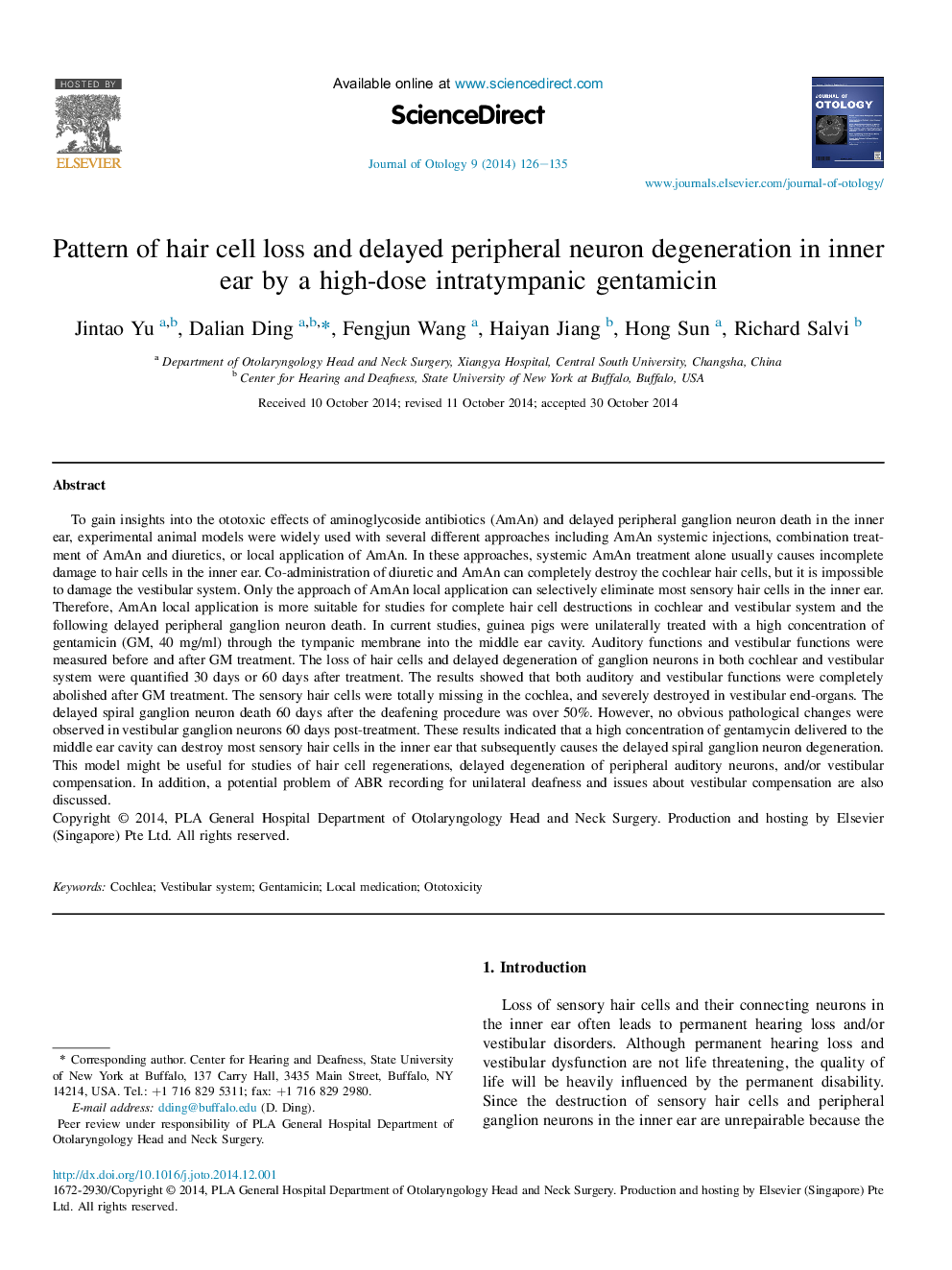| Article ID | Journal | Published Year | Pages | File Type |
|---|---|---|---|---|
| 4116705 | Journal of Otology | 2014 | 10 Pages |
To gain insights into the ototoxic effects of aminoglycoside antibiotics (AmAn) and delayed peripheral ganglion neuron death in the inner ear, experimental animal models were widely used with several different approaches including AmAn systemic injections, combination treatment of AmAn and diuretics, or local application of AmAn. In these approaches, systemic AmAn treatment alone usually causes incomplete damage to hair cells in the inner ear. Co-administration of diuretic and AmAn can completely destroy the cochlear hair cells, but it is impossible to damage the vestibular system. Only the approach of AmAn local application can selectively eliminate most sensory hair cells in the inner ear. Therefore, AmAn local application is more suitable for studies for complete hair cell destructions in cochlear and vestibular system and the following delayed peripheral ganglion neuron death. In current studies, guinea pigs were unilaterally treated with a high concentration of gentamicin (GM, 40 mg/ml) through the tympanic membrane into the middle ear cavity. Auditory functions and vestibular functions were measured before and after GM treatment. The loss of hair cells and delayed degeneration of ganglion neurons in both cochlear and vestibular system were quantified 30 days or 60 days after treatment. The results showed that both auditory and vestibular functions were completely abolished after GM treatment. The sensory hair cells were totally missing in the cochlea, and severely destroyed in vestibular end-organs. The delayed spiral ganglion neuron death 60 days after the deafening procedure was over 50%. However, no obvious pathological changes were observed in vestibular ganglion neurons 60 days post-treatment. These results indicated that a high concentration of gentamycin delivered to the middle ear cavity can destroy most sensory hair cells in the inner ear that subsequently causes the delayed spiral ganglion neuron degeneration. This model might be useful for studies of hair cell regenerations, delayed degeneration of peripheral auditory neurons, and/or vestibular compensation. In addition, a potential problem of ABR recording for unilateral deafness and issues about vestibular compensation are also discussed.
